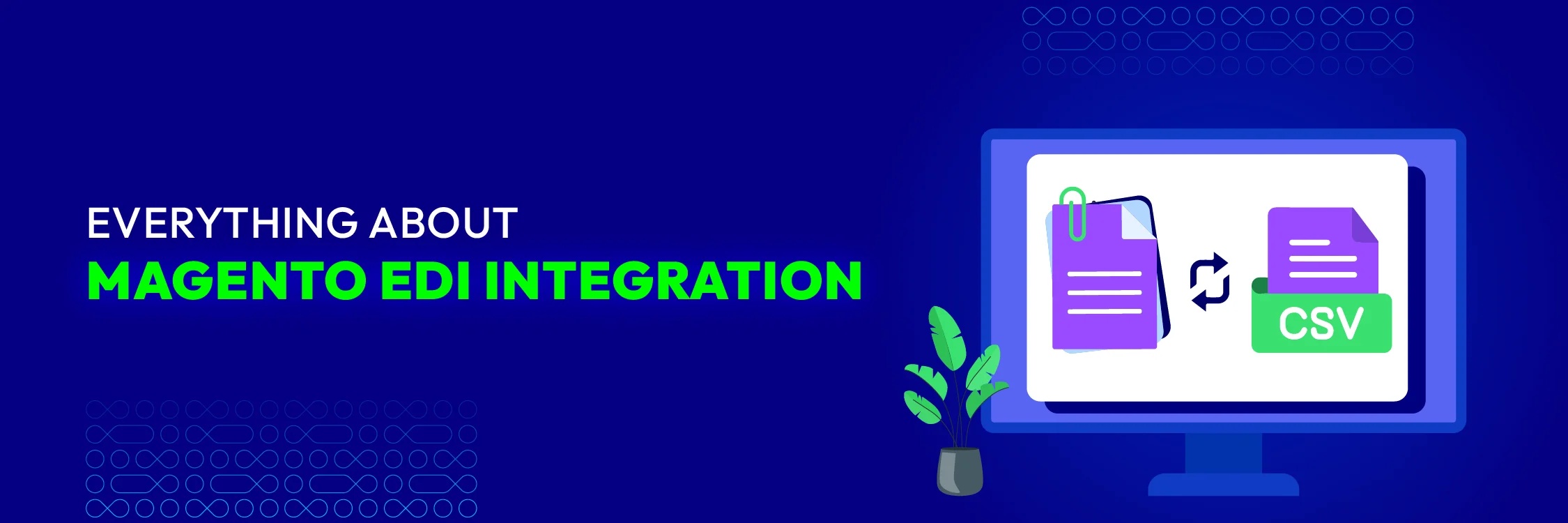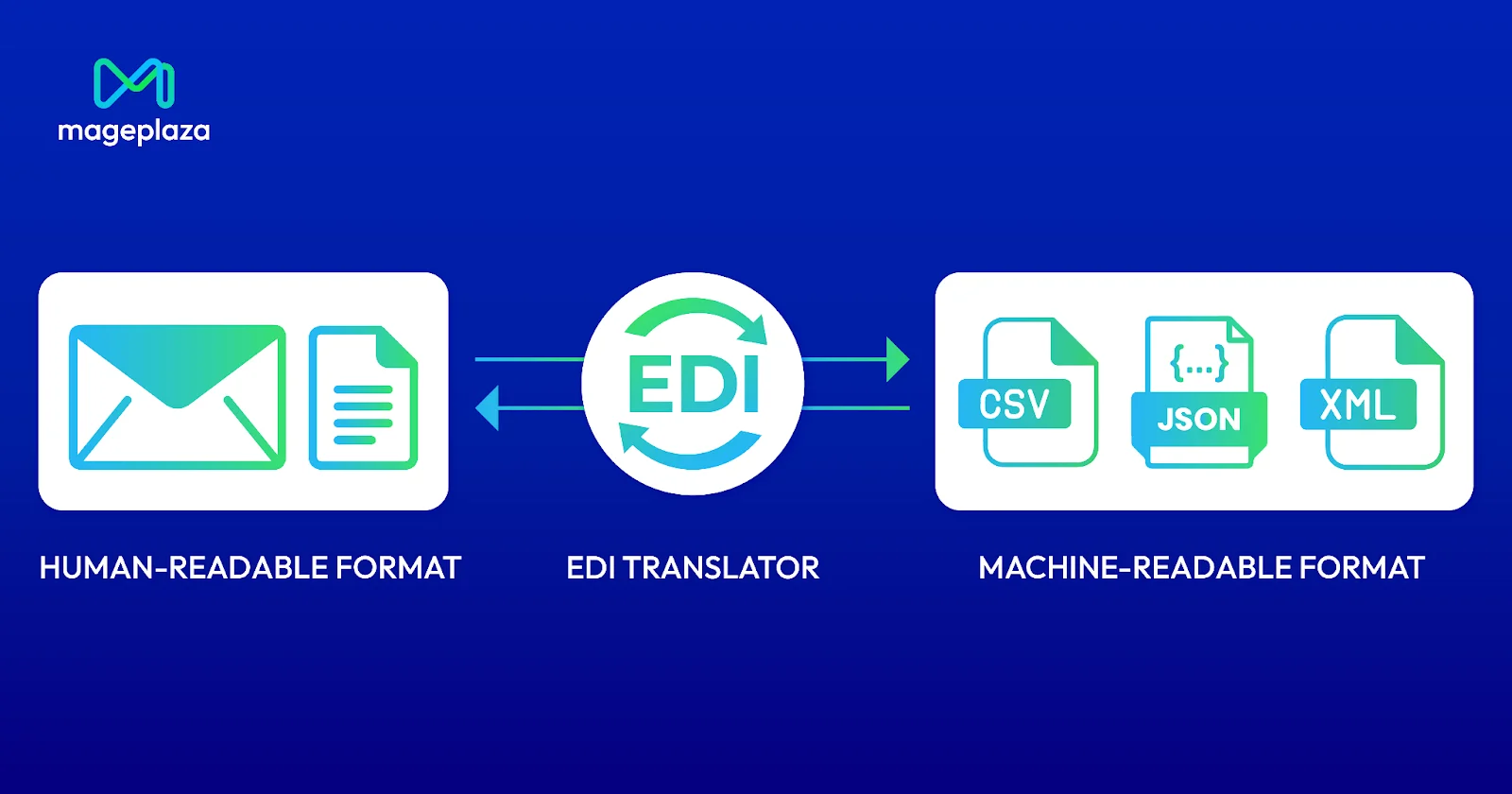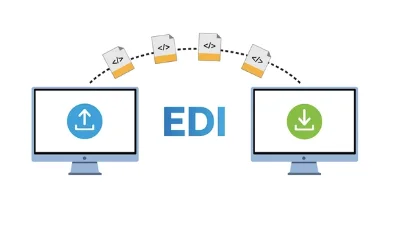Everything about Magento EDI Integration
Vinh Jacker | 03-17-2025

It would be great if every aspect of your business operations is perfect, and you can smoothly bring your brand to customers, but you fail to integrate the right technology, leading to performance barriers and not fully realizing your potential.
In the world of e-commerce, accurate and efficient information exchange is crucial. One of the leading technologies to achieve this is EDI (Electronic Data Interchange). By integrating EDI with Magento, businesses can automate business processes, minimize errors, and enhance operational efficiency.
This article will help you understand Magento EDI Integration, the benefits of integrating EDI with Magento, and how to perform this integration.
What Is EDI Integration?
EDI (Electronic Data Interchange) is a method of electronically exchanging data between different systems, including business documents such as invoices, purchase orders, shipping receipts, and many other types of documents.
EDI works by converting business documents from a human-readable format (such as paper or email) into a standard machine-readable format. This allows businesses to automate the information exchange process, eliminating the need for paperwork and reducing human errors.

What Is Magento?
Magento is one of the world’s leading open-source e-commerce platforms designed to help businesses build and manage professional online stores.
With powerful customization capabilities, Magento provides marketing and SEO tools, along with various features to manage products, orders, payments, and many other aspects of online business operations.
Widely used by medium and large enterprises globally, Magento is the ideal choice for those who want to create a flexible and robust online store.
The Advantage When You Integrate Magento
Integrating EDI (Electronic Data Interchange) with Magento not only automates business processes but also brings several significant benefits. Here are the specific advantages of integrating EDI with Magento:
Automating Business Processes
EDI enables the automation of data exchange processes between different business systems, reducing human intervention and speeding up transaction processing. Integrating EDI with Magento helps businesses automate processes such as:
-
Order Processing: Automatically receive and process orders from customers and partners.
-
Inventory Management: Update inventory status in real-time, reducing the risk of stockouts or overstocking.
-
Payments and Invoices: Automatically send and receive payment documents and invoices between businesses and partners.
Improving Product and Inventory Management
Integrating EDI with Magento helps businesses manage and update product and inventory information accurately and consistently. This ensures that all product information, from descriptions and prices to inventory status, is continuously updated across the entire system. Specific benefits include:
-
Reducing Errors: Eliminating errors due to manual data entry, ensuring data is always accurate and consistent.
-
Effective Inventory Management: Tracking inventory status in real-time, enabling timely restocking decisions and avoiding stockouts.
Enhancing Operational Efficiency
This integration also helps automate many business processes, from order processing to payment and shipping management. This helps businesses enhance operational efficiency and reduce costs associated with manual management. Specifically:
-
Saving Time: Reducing the time spent processing transactions by automating business processes.
-
Cost Reduction: Saving labor costs and minimizing errors arising from manual processes.
-
Increasing Productivity: Employees can focus on higher-value tasks instead of repetitive manual tasks.
Enhancing Customer Experience
By ensuring that product and order information is always accurate and timely, businesses can provide a better shopping experience for customers. Specific benefits include:
-
Faster Delivery: Improving order processing and shipping processes, ensuring timely deliveries.
-
Transparent Information: Providing accurate and continuously updated product information, enhancing the online shopping experience for customers.
-
Increasing Customer Satisfaction: Customers will feel more satisfied and confident when they receive quality service and accurate product information.
Strengthening Partner Relationships
EDI helps improve relationships with business partners by ensuring that transactions are carried out quickly and accurately. Specific benefits include:
-
Quick Transactions: Ensuring that transactions between businesses and partners are fast and accurate, increasing trust.
-
Improving Collaboration: Easily coordinating with business partners through automated processes and accurate data.
-
Enhancing Partner Satisfaction: Partners will feel more satisfied when transactions run smoothly and information is continuously updated.
Examples of Magento EDI Integration

Here are some specific examples of how EDI can integrate with Magento to maximize business efficiency:
Automated Order Receipt and Processing
When a customer places an order on the Magento website, the EDI system can automatically send this order information to the supplier or manufacturer. The manufacturer then confirms the order and begins the production or packaging process immediately. This helps shorten order processing time and ensures that customers receive products quickly.
Order Status Updates
When an order is shipped, the EDI system automatically updates the order status on the Magento website from “processing” to “shipped,” making it easy for customers to track their order status.
Real-Time Inventory Updates
Integrating EDI with Magento allows for automatic real-time inventory updates. When a product is sold or restocked, inventory information is automatically updated on the Magento system through EDI. This helps managers easily track current inventory levels and make timely restocking decisions.
Synchronizing Inventory Across Multiple Sales Channels
If your business sells on multiple channels (such as Amazon, eBay, and your own online store), EDI can help synchronize inventory information across these channels and Magento, ensuring that inventory levels are always accurate on all platforms.
How to Implement EDI Integration for Magento
To integrate EDI with Magento, follow these steps:
1. Choose an EDI Service Provider: First, select a reputable and suitable EDI service provider for your business needs. This provider will offer the necessary software and technical support for the integration process. Some reputable providers include: SPS Commerce, TrueCommerce, EDI Plus, v.v.
2. Set Up EDI Connection: After choosing a provider, set up the EDI connection between your Magento system and the provider’s EDI system. This includes installing EDI software and configuring technical parameters.
3. Configure Magento System: Next, configure the Magento system to integrate with EDI. This involves installing extensions and setting up data exchange rules.
4. Testing and Deployment: After completing the configuration, perform comprehensive testing to ensure the integration works correctly. After successful testing, deploy the EDI integration on your Magento system.
Conclusion
Integrating EDI with Magento brings many benefits to businesses, from enhancing operational efficiency to improving partner relationships. By automating the information exchange process, EDI helps businesses save time and costs while minimizing human errors.
We hope this article has helped you understand EDI Integration and how to implement it with Magento.
If you have any questions about Magento EDI Integration, please contact us for the best support.






